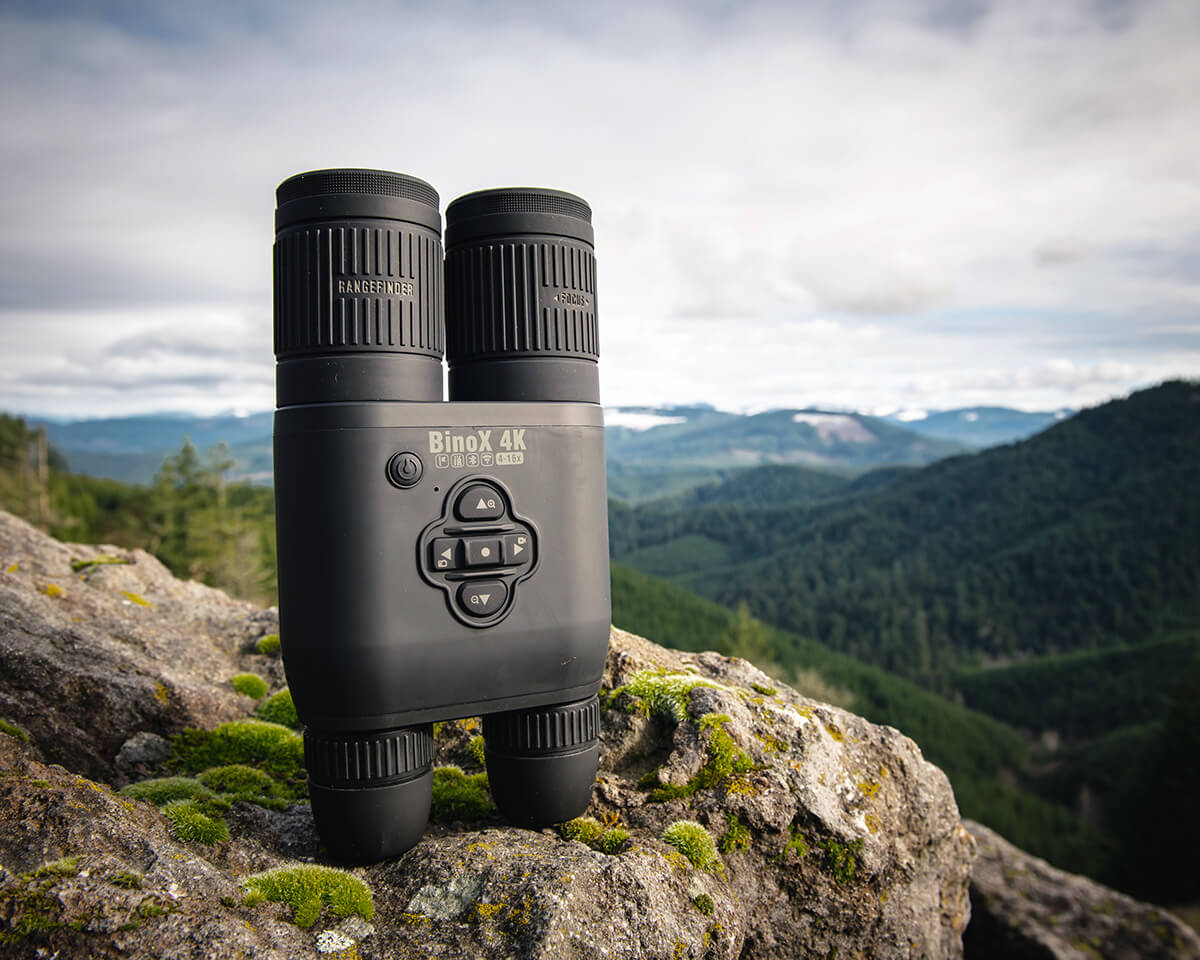Contents
Digital binoculars represent a significant advancement in optical technology, combining the traditional binocular design with cutting-edge digital features. These devices have revolutionized the way we observe and experience the world, offering a multitude of benefits and functionalities that were previously unimaginable.
These binoculars employ the same technology as digital cameras to store pictures, with a memory card kept inside the binoculars. The pictures can be uploaded to a computer for permanent storage and editing.
This layout will explore in detail the exciting advancements in digital binoculars and the various features that make them stand out in today’s market.
Advancements in Digital Binoculars
Advancements in technology have led to the development of digital binoculars with features such as:
High-resolution LCD screens: Some binoculars come with hi-res LCD screens and tiltable LCD screens or flip-out for out-of-the-way operation when not in use.
Artificial intelligence: NexOptic, a Canadian optics company, has developed a prototype of its Double Take digital binoculars that use artificial intelligence, live-streaming, and 4K video.
Night vision: Some binoculars have night vision capabilities, making them suitable for low-light conditions and astronomy.

Features of Digital Binoculars
Digital binoculars have several features that make them convenient and easy to use. Some of these features include:
Memory: All digital binoculars have the ability to store pictures via internal memory, but this is only enough memory to store 10–40 pictures.
Convenience: Digital binoculars offer the convenience of a digital camera and a binocular all in one instrument.
Applications: Digital binoculars are used in various applications, including sports, bird watching, surveillance, and defense.
Quality: The quality of the photographs or short videos that you take with your camera binoculars will depend on the quality of the digital.
Price: The price of digital binoculars varies depending on the model and features. Some models can be found for under $100, while others can cost over $1,000.
Future of Digital Binoculars
The digital binoculars market is projected to grow at a CAGR of 5% from 2023-2030, with technology spending in security and defense applications driving demand. The global digital binoculars market size is projected to reach multimillion USD by 2030.
As technology continues to advance, we can expect to see more features and capabilities added to digital binoculars, making them even more versatile and convenient for users.
The Rise of Digital Binoculars
Digital binoculars emerged as a response to the ever-growing demand for enhanced viewing experiences. While traditional binoculars provided a reliable way to magnify distant objects, they often lacked certain features that limited their utility in specific scenarios.
Digital binoculars sought to bridge these gaps by integrating digital technology into the optical design, resulting in a blend of powerful features that revolutionized the world of binoculars.
Key Advancements in Digital Binoculars
#1: High-Resolution Imaging:
At the heart of every digital binocular lies a high-resolution image sensor, typically a CMOS or CCD sensor. These sensors boast exceptional sensitivity to light and allow for the capture of stunningly detailed and sharp images.
The high resolution ensures that every fine detail, from the texture of feathers on a bird to the intricate patterns of a distant landscape, is vividly preserved.
#2: Image Stabilization Technology:
One of the significant challenges of using binoculars, especially at higher magnifications, is image shake caused by hand movements or external factors. Image stabilization technology in digital binoculars tackles this issue by actively compensating for vibrations and movements, providing a remarkably steady view.
This feature is a game-changer, particularly for birdwatchers, stargazers, and sports enthusiasts seeking to observe fast-moving objects with clarity.
#3: Night Vision Capabilities:
Another revolutionary feature in digital binoculars is night vision technology. Equipped with infrared illumination or thermal imaging, these binoculars extend our observation capabilities into low-light conditions and even complete darkness.
This makes them invaluable tools for wildlife observation, security operations, and night sky exploration.
#4: Connectivity and Smart Features:
Digital binoculars are not just optical devices; they are now smart companions on our adventures. With built-in Wi-Fi and Bluetooth connectivity, users can seamlessly transfer their observations to smartphones, tablets, or laptops.
Additionally, the integration of AI-powered digital assistants enhances the user experience, providing real-time information, object identification, and interactive features.
#5: Video Recording and Live Streaming:
Digital binoculars have transcended the boundaries of still imagery. Many models come equipped with video recording capabilities, allowing users to capture dynamic moments in high-quality videos.
Moreover, with live-streaming features, users can share their experiences with others in real-time, creating an interactive and engaging platform for sharing the wonders of the world.
#6: Lightweight and Rugged Design:
Digital binoculars have embraced the spirit of adventure with their compact and lightweight designs. They are perfect companions for outdoor activities such as hiking, birdwatching, and wildlife exploration.
Moreover, with robust build quality and waterproofing, they are built to withstand the rigors of nature, making them reliable partners in any weather conditions.
Applications of Digital Binoculars:
#1: Wildlife Observation and Birdwatching:
Digital binoculars have revolutionized the way we observe and appreciate wildlife. Enthusiasts can now capture detailed images and videos of animals in their natural habitats without disturbing them. Birdwatchers can identify various bird species with greater accuracy and document rare sightings.
#2: Sports and Outdoor Activities:
Sports enthusiasts can now get closer to the action and capture memorable moments at sporting events without sacrificing image quality. Additionally, hikers, campers, and outdoor adventurers can experience the thrill of exploration with the aid of powerful optics and smart features.
#3: Surveillance and Security:
In the field of security and surveillance, digital binoculars play a pivotal role. Law enforcement and security personnel benefit from the night vision capabilities, high-resolution imaging, and video recording features, enabling them to observe and document crucial details in various situations.
Frequently Asked Questions (FAQs)
What are digital binoculars, and how do they differ from traditional binoculars?
Digital binoculars are optical devices that combine the functions of traditional binoculars with modern digital technology. While traditional binoculars use lenses to magnify distant objects, digital binoculars incorporate digital imaging sensors and processors, enabling features like high-resolution imaging, image stabilization, night vision, and smart functionalities such as Wi-Fi and GPS connectivity.
How does high-resolution imaging enhance the viewing experience in digital binoculars?
High-resolution imaging in digital binoculars is achieved through advanced image sensors, such as CMOS and CCD sensors. These sensors capture more detailed and clearer images, providing users with enhanced clarity and better overall image quality, especially when observing distant or intricate subjects.
What is image stabilization technology, and why is it important in digital binoculars?
Image stabilization technology in digital binoculars helps reduce the effects of hand movements and vibrations, resulting in a steadier view. This is crucial, especially at higher magnifications, where even minor shakes can significantly impact the viewing experience. Image stabilization ensures that users can enjoy a stable image even when observing distant or moving subjects.
Can digital binoculars be used in low-light conditions or during nighttime?
Yes, many digital binoculars are equipped with night vision capabilities. These devices use technologies like infrared illumination and thermal imaging to enable observation in low-light conditions and complete darkness. Night vision features make digital binoculars suitable for wildlife observation, surveillance, and other activities in dimly lit environments.
How does the built-in digital assistant feature enhance the user experience in digital binoculars?
The built-in digital assistant in digital binoculars, powered by artificial intelligence, provides real-time information, object identification, and interactive features. Users can receive additional details about the observed subjects, learn about their environment, and gain insights into their surroundings, making the viewing experience more informative and engaging.
Can I record videos with digital binoculars, and how does live-streaming work?
Yes, most digital binoculars come with video recording capabilities, allowing users to capture high-quality videos of the scenes they observe. Live-streaming, on the other hand, enables users to share their viewing experiences in real-time with others. By connecting digital binoculars to compatible devices, such as smartphones or tablets, users can stream a live video feed, making it ideal for sharing exciting moments with friends, family, or online audiences.
Are digital binoculars portable and user-friendly?
Yes, digital binoculars are designed with portability and user-friendliness in mind. They are often lightweight and compact, making them easy to carry during outdoor activities or travel. Additionally, manufacturers pay special attention to the user interface, providing intuitive controls and menus to ensure ease of use for both beginners and experienced users.
In what applications can digital binoculars be used?
Digital binoculars have a wide range of applications. They are popular among wildlife enthusiasts and birdwatchers for observing animals and birds in their natural habitats. Sports enthusiasts use digital binoculars to get close-up views of sporting events. Moreover, they are also used in surveillance and security operations, providing enhanced observation capabilities to law enforcement and security personnel.
How does Wi-Fi and Bluetooth connectivity benefit digital binocular users?
Wi-Fi and Bluetooth connectivity allow users to transfer images and videos wirelessly to other devices, such as smartphones, tablets, or laptops. This makes it convenient to save, edit, or share their observations with others. Additionally, wireless connectivity enables remote control of digital binoculars, adding to the ease of use and enhancing the overall user experience.
Are digital binoculars waterproof and rugged for outdoor use?
Many digital binocular models are designed to be waterproof, dustproof, and rugged to withstand various outdoor conditions. These features make them ideal for use in outdoor activities, such as hiking, camping, and wildlife exploration, where weather and environmental conditions may be challenging.
Conclusion
In conclusion, digital binoculars have come a long way since their inception, with advancements in technology leading to the development of binoculars with features such as zoom, high-resolution LCD screens, artificial intelligence, and night vision.
These binoculars offer the convenience of a digital camera and a binocular all in one instrument, making them suitable for various applications. As technology continues to advance, we can expect to see more features and capabilities added to digital binoculars, making them even more versatile and convenient for users.

A Binoculars enthusiast, who love exploring skies and watching birds. It is my hobby to collect Binoculars of different kinds and try to explore the world through various lenses. This is all I do to explore happiness by magnifying my beautiful world.




